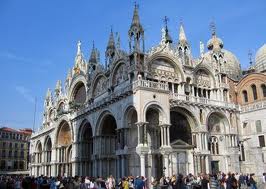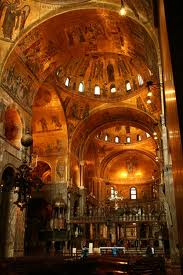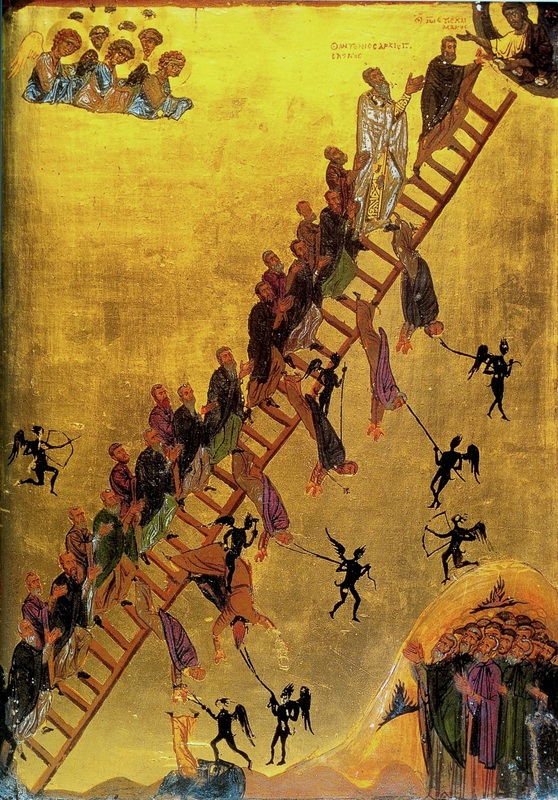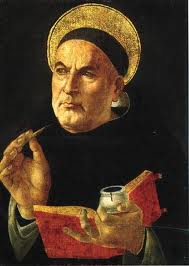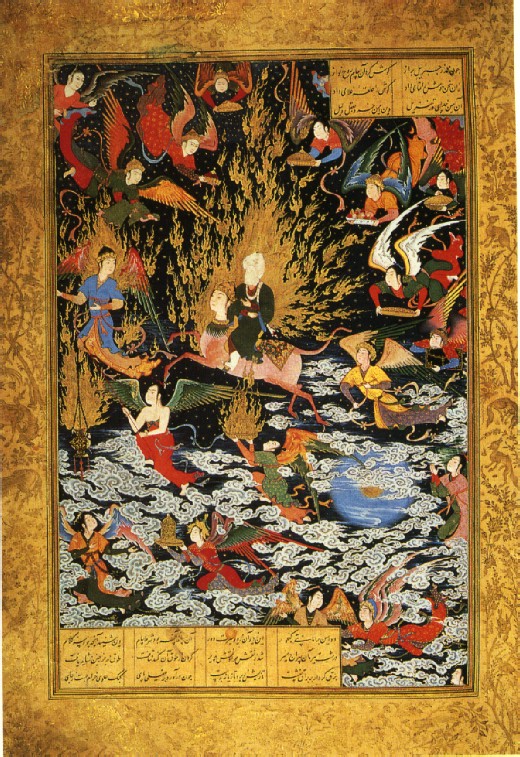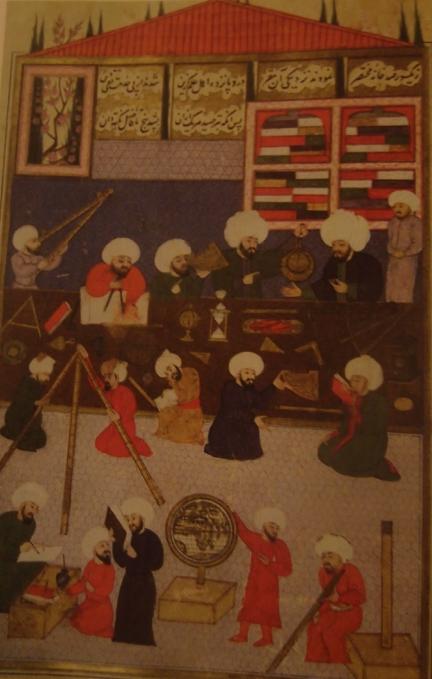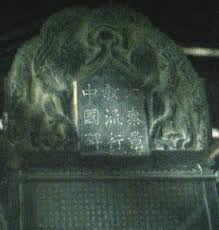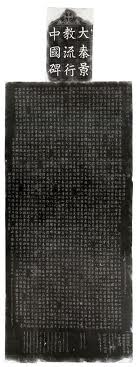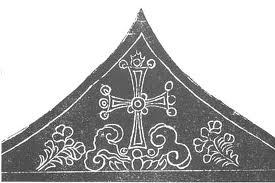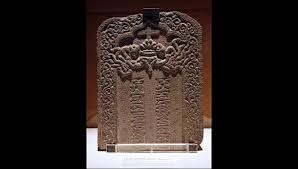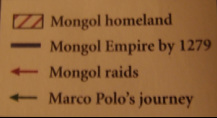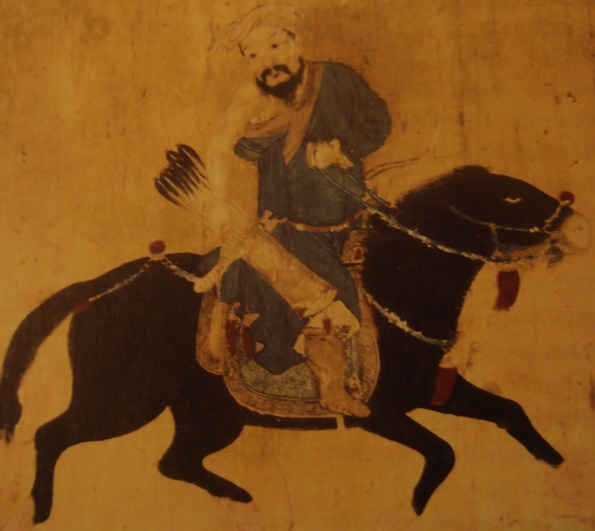The Basic Gist
Lauren Ellsworth
The Empires discussed are those of the Western World (500 CE - 1300 CE) both on their own and as a whole, including Europe (the Byzantines/European Christendom), The Muslim Empires, China, and The Mongols.
European Christendom
At this point, Europe has come together as the Byzantine Empire. Prior to this, in the Dark Ages, art became rather primitive, lacking 3 dimensional qualities and much of the realistic and extravagant quality that had built up in the Roman Empire. Much literature was lost as well and fewer persons were educated. Now, in this time period (again, around 500 – 1300 CE) European Christendom emerged. Art and literature began to resurface, both on it’s own within Europe, but also because of certain interactions with the Middle East, China, and Mongolia. This was possible because trade was established, allowing for ideas and culture to spread as well as increase the standard of living of Europe, thus giving the Byzantines the time, money, and opportunity to reenter artistic and literary endeavors.
Much art, pieces of literature, and culture from Europe at this point was centered on Christianity. The religion had risen to importance in the Dark Ages with Monks being the largest percentage of those who could read.
For example, this Cathedral pictured below, located in Venice Italy, is a classic example of Byzantine architecture. Such churches were an example of perhaps the greatest achievement of Byzantine art and are an example of an expression of Byzantine culture. This same style can still be found around the world today.
Here is an example of a work of art and also a work of Literature. The Painting below was made to be an illustration for a literary work.
This is a 12th century Byzantine painting intended to illustrate an instructional book for monks, written in the 6th century by Saint John Climacus. The book advised monks to renounce the world with its many temptations and vices and to ascend step by step toward union with God in heaven. The icon served as a visual illustration of that process. The monks are climbing the ladder of the spiritual journey toward God but are beset by winged demons representing various sins- lust, anger, and pride for example- which are described in Climacus’s book.
This is both an example of a literary work as well as art. Such Christian culture was a source of motivation for the Crusades as well as missionary expeditions, both major transmitters of cultural traditions, literature, and art/architecture.
An example of literary work emerging in Europe is the writings of Aristotle. By the fourteenth century, these writings had become the basis for university education and dominated the thought of Western Europe.
Europe found such texts in the Arab world, where they had long ago been translated into Arabic. In the 12th and 13th centuries, an explosion of translations from Greek to Arabic into Latin allowed Europe to also adopt the Greek way of life via interacting with the Arabs. Through interaction, Europe regained some ideas that were born exactly where they were, only hundreds of years before and such ideas were a topic of literature, especially among philosophers and students. In the work of 13th century theologian Thomas Aquinas (seen in a painting below from the 13th century), Aristotle's ideas were thoroughly integrated into a systematic presentation of Christian doctrine. Thus we see cultures blending and adopting parts of other cultures, a trend to be noticed.
An example of literary work emerging in Europe is the writings of Aristotle. By the fourteenth century, these writings had become the basis for university education and dominated the thought of Western Europe.
Europe found such texts in the Arab world, where they had long ago been translated into Arabic. In the 12th and 13th centuries, an explosion of translations from Greek to Arabic into Latin allowed Europe to also adopt the Greek way of life via interacting with the Arabs. Through interaction, Europe regained some ideas that were born exactly where they were, only hundreds of years before and such ideas were a topic of literature, especially among philosophers and students. In the work of 13th century theologian Thomas Aquinas (seen in a painting below from the 13th century), Aristotle's ideas were thoroughly integrated into a systematic presentation of Christian doctrine. Thus we see cultures blending and adopting parts of other cultures, a trend to be noticed.
Expansion, of course, has been a characteristic of vitually every civilization and has taken a variety of forms- territorial conquest, empire building, vigorous traditing initiatives, and missionarty activity. Europe was no exception. By the thirteenth and fourteenth centuries, Europeans had direct, though limited, contact with India, China, and Mongolia. This sets the stage for cultures spreading.
Nothing more dramatically revealed European expansiveness and the religious passions that informed it than the Crusades, a series of “holy wars” that captured the imagination of Western Christendom for more than four centuries. Interaction with the Islamic world in these crusades had long term cultural consequences. Tens of thousands of peoples came into personal contact with the Islamic world, from which they picked up a taste for the many luxury good available there, stimulating a demand for Asian goods which in turn impacted the culture of Europe as it came to lean on luxury items from Europe. This also added to the curiosity of Europe to explore, a cultural element that led into multiple revolutions and global exploration.
Nothing more dramatically revealed European expansiveness and the religious passions that informed it than the Crusades, a series of “holy wars” that captured the imagination of Western Christendom for more than four centuries. Interaction with the Islamic world in these crusades had long term cultural consequences. Tens of thousands of peoples came into personal contact with the Islamic world, from which they picked up a taste for the many luxury good available there, stimulating a demand for Asian goods which in turn impacted the culture of Europe as it came to lean on luxury items from Europe. This also added to the curiosity of Europe to explore, a cultural element that led into multiple revolutions and global exploration.
The Islamic World
Another important Empire to take note of within this topic is the Islamic World, 900-1500 CE.
As Europe was in the Dark Ages, the Middle East enjoyed a Golden Age of discovery, innovation, religious development, intellectualism, and scientific and mathematic advances. The Muslim culture was equally as vibrant as any culture before or after and contributed many important inventions to the world. In terms of art, this region was once again centered on religion, but also on science. The culture of the area was most notably spread by the Crusades, when Europeans would discover this vibrant culture and take some of it home with them.
As Europe was in the Dark Ages, the Middle East enjoyed a Golden Age of discovery, innovation, religious development, intellectualism, and scientific and mathematic advances. The Muslim culture was equally as vibrant as any culture before or after and contributed many important inventions to the world. In terms of art, this region was once again centered on religion, but also on science. The culture of the area was most notably spread by the Crusades, when Europeans would discover this vibrant culture and take some of it home with them.
To describe the spread of Islam culture and art, an easy thing to do is trace the spread of Islam (see map above). As the religion spread, religious art and literature as well as the culture that Muslims lived by spread as well. Below are some examples of such art and literature.
The Painting below is "The Night Journey of Muhammad". It is one of many representations of the Night Journey, a spiritual story from the Quran in which God takes the prophet "from the sacred place of worship to the far distant place of worship". Paintings like this emerged in Persia because of the spread of Islamic culture. This one in particular actually dates from the early 16th century, a little later than the dates that have been focused on.
Below is an example of some poetry that emerged from the Islamic Empire. The poets was Rumi (1207-1273). Once again it is religious in nature. Also, this has clearly been translated from the original text. Nonetheless, it reflects the philosophy, intellectualism, and religious faith of the culture as a whole. As it is a religious text, things like this would have spread with Islam.
Lastly, here is another side of art from the Muslims. This time, science is being depicted. Various inventions and scientific advancements are pictures here. This serves not only as a work of art, but also as evidence of the ideas and advancements that the Islamic world contributed.
China
China, too, was connected to interactions with Europe and the Middle East as well at it's own vibrant culture that was spread. Chinese culture reached Europe through the Middle East essentially, with trade routes relaying good and fine things such as porcelain and silk. These goods became a part of European culture as well as their art. The middle Eastern art style was definitely influenced by China. This can be seen when comparing the two.
An excellent example of another blending of cultural traditions, art, and literature (all in one story) is that of a certain Christian Missionary:
Missionaries spread Christianity to China. 635 CE Tang Dynasty emporer Taizon welcomed a Persian Christian monk and some two dozen of his associates to the Chinese capital. The Chinese court at this time was unusually open to a variety of cultural traditions, including Buddhism, Islam, and Zoroastrianism in addition to Christianity.
Though Christianity didn’t establish a lasting presence, small communities flourished. These generated a remarkable set of writings known as the “Jesus sutras” (a sutra is a Buddhist religious text).
An excellent example of another blending of cultural traditions, art, and literature (all in one story) is that of a certain Christian Missionary:
Missionaries spread Christianity to China. 635 CE Tang Dynasty emporer Taizon welcomed a Persian Christian monk and some two dozen of his associates to the Chinese capital. The Chinese court at this time was unusually open to a variety of cultural traditions, including Buddhism, Islam, and Zoroastrianism in addition to Christianity.
Though Christianity didn’t establish a lasting presence, small communities flourished. These generated a remarkable set of writings known as the “Jesus sutras” (a sutra is a Buddhist religious text).
Some were carved on large stone slabs (like the one above) while other were written on scrolls discovered early in the 20th century in the caves of Dunhuang in north western China. What has fascinated scholars about these writings is the extent to which they cast the Christian message in distinctively Chinese terms making use particularly of Buddhist and Daoist concepts long familiar to China. For example, at the top of a large stone tablet known as the Nestorian monument (see three images below) is a Christian cross arising out of a white cloud (a characteristic Daoist symbol) and a lotus flower (an enduring Buddhist image). The written texts themselves, which refer to Christianity as the “Religion of Light from the West” or the “Luminous Religion”, describe it’s arrival in China and outline its message within the framework of Chinese culture. Essentially, the Chinese of these small communities took something that had come to them from another region and applied it to their own culture.
This is an example of both art, literature, and cultural traditions being transmitted and changed. The sutras describe ways to live, culture is a way that people live and Chinese Christian art is essentially a symbol of the cultural change that China went through (despite how small and short lived). Below are more images depicting Chinese adaptations of Christian symbols and architecture.
The Mongols
The Mongol movement in World history represented an enormous cultural encounter between nomadic pastoralists and the settled civilizations of Eurasia. The experiences of China, Persia, and Russia provide brief glimpses into several expressions of this massive clash of cultures.
With regards to China, for example, Mongol Khans made use of traditional Confucian rituals, supported the building of some Daoist temples, and were particularly attracted to a Tibetan form of Buddhism, which returned the favor with strong political support. They did not absorb most of Chinese culture though. For example, they largely ignored the traditional Chinese examination system.
Mongols honored and supported Merchants and artisan far more than Confucian bureaucrats had ever been inclined to do. Later, China eradicated the memory of Mongols and renewed commitment to Confucian values, but the fact that the Mongols attempted to maintain Chinese art (as well as the art of the other cultures it conquered and absorbed) reflects the importance of art, literature, and cultural traditions.
Mongols would adopt art and culture instead of establishing their own everywhere they went. For example, artisans would be captured and used in their cities and such. This is something we have seen in history before, a continuity. Large Empires often absorb cultural traits as opposed to eradicating them and this creates blended cultures, a high standard of living (most of the time), and reflects the significance of art, literature, and cultural traditions not only in changing the directions of Empires, but also in the lives of the people who lived then. Clearly much time was spent on it.
In ruling China, the Mongols employed high positions to a number of Muslims and a few Europeans, such as Marco Polo. This is an example of mingling cultural traditions.
With regards to China, for example, Mongol Khans made use of traditional Confucian rituals, supported the building of some Daoist temples, and were particularly attracted to a Tibetan form of Buddhism, which returned the favor with strong political support. They did not absorb most of Chinese culture though. For example, they largely ignored the traditional Chinese examination system.
Mongols honored and supported Merchants and artisan far more than Confucian bureaucrats had ever been inclined to do. Later, China eradicated the memory of Mongols and renewed commitment to Confucian values, but the fact that the Mongols attempted to maintain Chinese art (as well as the art of the other cultures it conquered and absorbed) reflects the importance of art, literature, and cultural traditions.
Mongols would adopt art and culture instead of establishing their own everywhere they went. For example, artisans would be captured and used in their cities and such. This is something we have seen in history before, a continuity. Large Empires often absorb cultural traits as opposed to eradicating them and this creates blended cultures, a high standard of living (most of the time), and reflects the significance of art, literature, and cultural traditions not only in changing the directions of Empires, but also in the lives of the people who lived then. Clearly much time was spent on it.
In ruling China, the Mongols employed high positions to a number of Muslims and a few Europeans, such as Marco Polo. This is an example of mingling cultural traditions.
This painting is actually Chinese, depticting a Mongol mounted on a horse with a bow and arrow. Art is significant in recording a lot of things about cultures, including military abilities in this case.
The Mongol Empire also definitely showed a desire to learn from other Empires. Chinnggis Khan actually wrote a letter to Changchun (an early Daoist master) in 1219, desiring to meet with the teacher. Changchun made the arduous journey to the Chinggus Khan where he stayed with him for almost a year before returning to China (see the actual letter on page. 553 of our textbook, The Ways of the World). This is once again an excellent example of cultural interaction and blend.
The last matter of importance concerning the Mongols to be discussed is the fact that this Empire united all the major trade networks of the hemisphere. Doing this not only changes the economies of all the regions, but it also means that cultures can spread farther and more effectively. Uniting trade routes does not only share wealth, but also values, art, literature, and traditions.
Overall Significance and Reason Why These Interactions Occurred
The reason why cultural interactions occur is because of four main things. First, trade. When trade between two regions is established, that is a guarantee that they will be trading not only their goods and innovations, but also their religions, cultural traditions, and values. When people travel and trade in different markets, they bring who they are (their culture essentially) with them. Second, war and conquering. When place is conquered, their will obviously be culture clash. Whether that results in one culture being eradicated or whether it is absorbed, that depends, but none the less, changing land ownership and conflict between Empires defines cultural interactions. Third because of the natural curiousity formed in peoples for other cultures. Individuals like Marco Polo traveled Eurasia to discover new things for some reason. When Europe learned of Islamic and Chinese goods, their interest was sparked and their culture came to draw elements from those places because of their luxury goods. The point is that Empires are always expanding. Lastly, religion. Religious expansion and missionary activity spread cultures like no other element described here, as seen by the examples that have been outlined in this basic gist, especially when that religion is a defining feature of an Empire (which was true for all of these Empires, just not so much for the Mongols who, please notice, do not have as many examples of artwork outside of military pieces and pictures of Khan).
In a sentence, expansion (and therefore cultural interaction) has been a characteristic of virtually every civilization and has taken a variety of forms- territorial conquest, empire building, vigorous trading initiatives, and missionary activity. The significance of cultural interaction involving art, literature, and cultural traditions lies within this fact.
The significance of cultural interaction involving art, literature, and cultural traditions has, once again, four aspects. First, because it continuously occurs in history, it is something that ought to be focused on and studied so as to understand how it influences and is influenced by the continuities and changes that we see throughout it. When something in history continues to happen, especially something tangible like art, literature, and culture, it is something to look at. Second, the art, literature, cultural traditions, and religion of an Empire do much to define it. China, for example, with Confucianism developed very differently from European Christianity. Third, the cultural blends caused by interactions create new ideas, new peoples, and add to the diversity of intellectual and philosophical potential in the world. Fourth (lastly), the cultural interactions of this time period have defined a lot of these regions to this day. Understanding the cultures of these societies helps historians better grasp how things became the way they are now, a question that history seeks to answer.
In a sentence, expansion (and therefore cultural interaction) has been a characteristic of virtually every civilization and has taken a variety of forms- territorial conquest, empire building, vigorous trading initiatives, and missionary activity. The significance of cultural interaction involving art, literature, and cultural traditions lies within this fact.
The significance of cultural interaction involving art, literature, and cultural traditions has, once again, four aspects. First, because it continuously occurs in history, it is something that ought to be focused on and studied so as to understand how it influences and is influenced by the continuities and changes that we see throughout it. When something in history continues to happen, especially something tangible like art, literature, and culture, it is something to look at. Second, the art, literature, cultural traditions, and religion of an Empire do much to define it. China, for example, with Confucianism developed very differently from European Christianity. Third, the cultural blends caused by interactions create new ideas, new peoples, and add to the diversity of intellectual and philosophical potential in the world. Fourth (lastly), the cultural interactions of this time period have defined a lot of these regions to this day. Understanding the cultures of these societies helps historians better grasp how things became the way they are now, a question that history seeks to answer.

